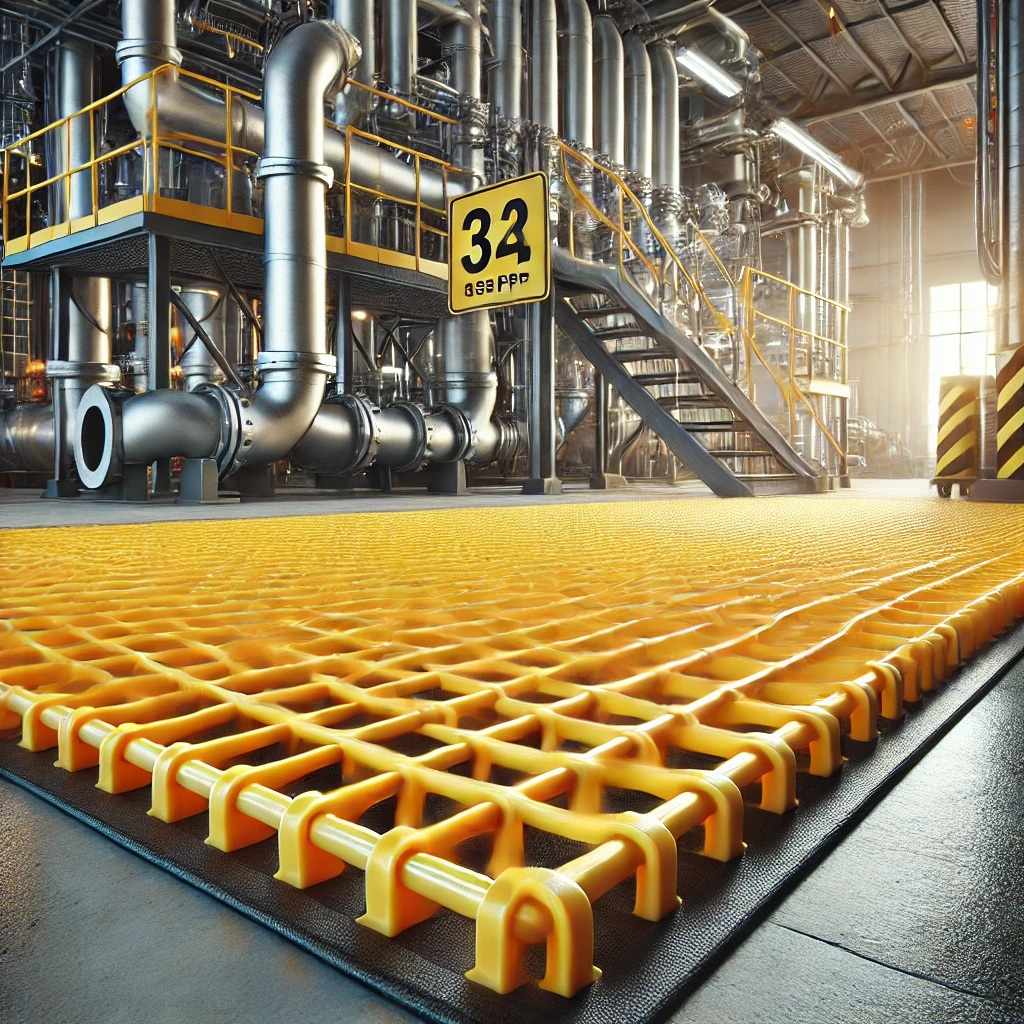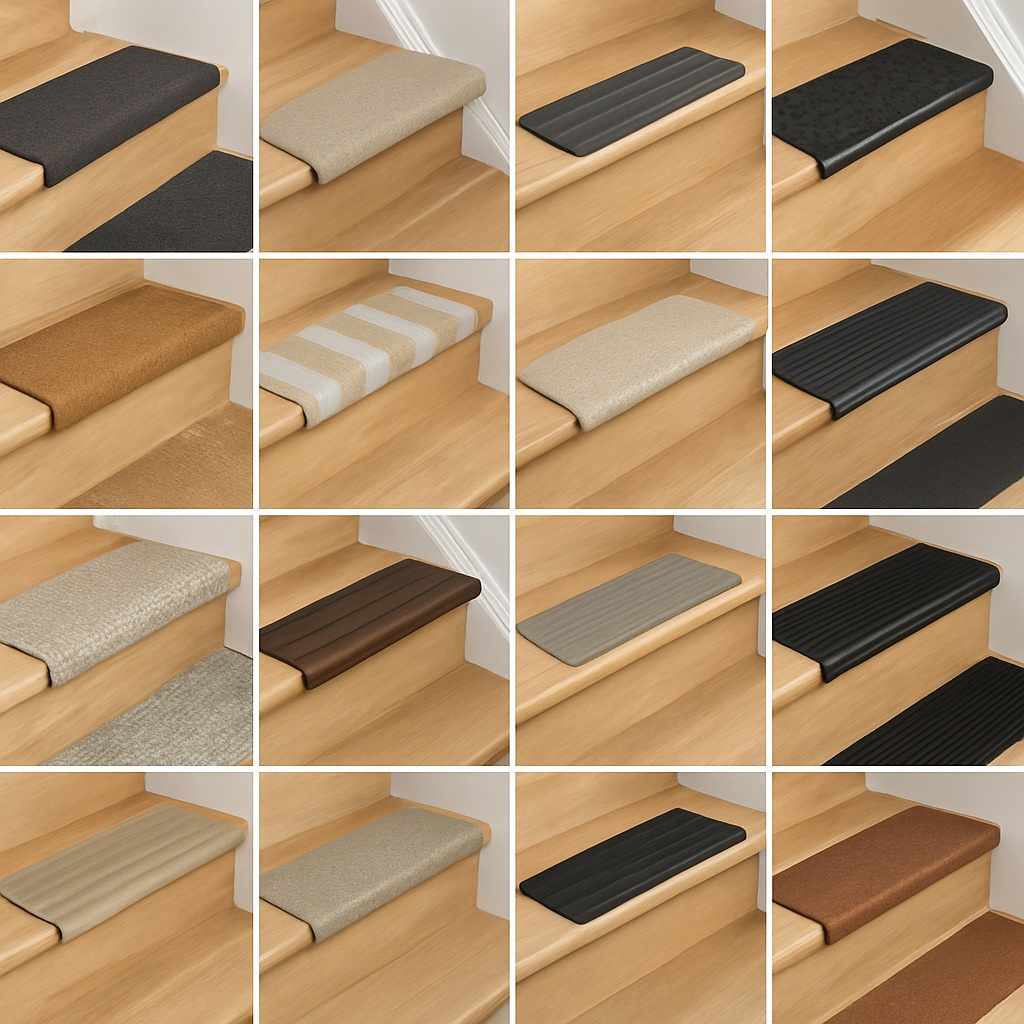
In the fast-paced world of industrial machinery, flooring and platform integrity are not just safety concerns — they’re performance enablers. Whether supporting heavy equipment, forklifts, or maintenance personnel, the load capacity of FRP grating (Fiberglass Reinforced Plastic) directly determines structural reliability and operational continuity.
Unlike traditional steel grating, which can corrode or deform under continuous stress, FRP grating provides exceptional strength-to-weight ratios, corrosion resistance, and design flexibility. However, realizing these benefits depends on one critical step — accurately calculating the load capacity for each application.
💡 What Exactly Is Load Capacity in FRP Grating?
Load capacity refers to the maximum weight a grating panel can safely support without experiencing permanent deformation or failure. It depends on three key variables:
Span length – the distance between supports.
Type of loading – whether the load is uniform (e.g., distributed equipment weight) or concentrated (e.g., a machine leg or tire).
Grating type and geometry – molded or pultruded FRP, mesh pattern, and thickness.
For engineers in the machinery sector, understanding these factors ensures flooring and platforms are designed with precision — balancing safety, cost, and performance.
⚙️ How to Calculate Load Capacity: A Practical Framework
While exact calculations depend on manufacturer data and safety standards, the process follows a consistent engineering logic.
Step 1: Define the Span and Support Conditions
Start by identifying how your grating will be supported — on two sides (simply supported), or four sides (continuous support).
Shorter spans = higher load capacity.
Longer spans = higher deflection risk.
For instance, an FRP grating panel with a 3-foot span may handle twice the load of the same panel spanning 6 feet.
Step 2: Determine the Type of Load
Uniform loads are spread evenly, such as distributed storage or pedestrian traffic.
Concentrated loads occur at a single point — like the wheel of a service cart or the leg of industrial machinery.
Each load type influences deflection behavior differently, and FRP grating manufacturers typically provide load tables for both conditions.
Step 3: Use Manufacturer Load Tables
Consult the manufacturer’s load table, which lists:
Maximum load (lbs/ft² or kg/m²)
Corresponding deflection (in inches or mm)
Recommended safety factors (often 2.5–5×)
Example:
If a molded FRP grating panel (1.5" deep) spans 3 feet, its uniform load capacity might be 250 lbs/ft² at 0.25" deflection. If your application requires minimal flex (for precise machinery alignment), you’d design below that threshold — ideally using 60–70% of the listed maximum load.
Step 4: Apply Safety Factors
Always apply a safety factor (SF) to account for real-world variations in weight distribution, environmental conditions, and dynamic loads.
Formula:
Allowable Load=Test LoadSafety Factor\text{Allowable Load} = \frac{\text{Test Load}}{\text{Safety Factor}}Allowable Load=Safety FactorTest Load
For critical applications, such as equipment platforms or walkways under vibration, engineers often use SF = 4.0–5.0.
Step 5: Verify Deflection Limits
In high-precision industrial environments, deflection (the amount the grating bends under load) is as important as the total load capacity.
Typical deflection criteria:
Pedestrian walkways: ≤ 0.25"
Equipment platforms: ≤ 0.10"–0.15"
Exceeding these limits can cause machinery misalignment or unsafe walking surfaces.
🧩 Real-World Example: Machinery Access Platform
Imagine a maintenance platform in a manufacturing plant supporting technicians and tool carts weighing up to 600 lbs.
Grating type: Pultruded FRP (2" deep, 1.5" mesh)
Span: 4 feet between supports
Load type: Concentrated (cart wheel load)
From the manufacturer’s table, you find that the panel supports 1,200 lbs at 0.15" deflection.
Applying a safety factor of 2.5 gives:
Allowable Load=12002.5=480 lbs\text{Allowable Load} = \frac{1200}{2.5} = 480\text{ lbs}Allowable Load=2.51200=480 lbs
Since your expected load is 600 lbs, the current design isn’t sufficient — you’d either shorten the span, choose a deeper grating, or add intermediate supports. This ensures structural integrity without unnecessary over-engineering.
🧱 Why Load Capacity Calculation Is Critical in the Machinery Sector
Protects personnel and equipment – Prevents platform collapse or uneven surfaces that can destabilize heavy machinery.
Ensures compliance – Meets OSHA, ISO, and ASTM requirements for industrial flooring safety.
Optimizes costs – Avoids over-specifying materials while maintaining structural performance.
Extends asset life – Properly rated gratings experience less fatigue and require fewer replacements.
In manufacturing, every inch of flooring must support precision, productivity, and safety — and FRP grating, when properly rated, delivers on all three.
🧠 Common Mistakes to Avoid
Ignoring concentrated load points (especially machine feet or small wheel loads)
Using generalized charts without span adjustment
Skipping environmental considerations like temperature and chemical exposure
Overlooking deflection tolerances for vibration-sensitive equipment
A small oversight in load calculation can lead to costly downtime or unsafe work conditions — issues easily preventable with proper analysis.
🔍 How to Simplify the Process
Most leading FRP grating suppliers offer digital load calculators or technical datasheets that integrate span, grating type, and load type automatically.
For complex machinery installations, consider a Finite Element Analysis (FEA) or consult the manufacturer’s engineering team to validate assumptions.
💬 Frequently Asked Questions (FAQ)
Q1: What’s the difference between “ultimate load” and “allowable load”?
Ultimate load is the maximum load at failure; allowable load is the safe design load, typically divided by a safety factor (2.5–5×).
Q2: Can I use FRP grating under heavy equipment?
Yes — as long as load capacity and deflection limits are verified using the manufacturer’s tables. Pultruded FRP grating is preferred for concentrated or rolling loads.
Q3: Does temperature affect FRP grating strength?
Yes. Elevated temperatures slightly reduce mechanical strength. Always apply temperature correction factors above 65°C (150°F).
Q4: How often should FRP grating load ratings be reviewed?
Every 3–5 years, or when operational loads, machinery weight, or environmental conditions change.
Q5: What safety standards apply?
Look for compliance with ASTM E84, ANSI/NAAMM MBG 531, and OSHA 1910.22 for safe walking-working surfaces.


Write a comment ...